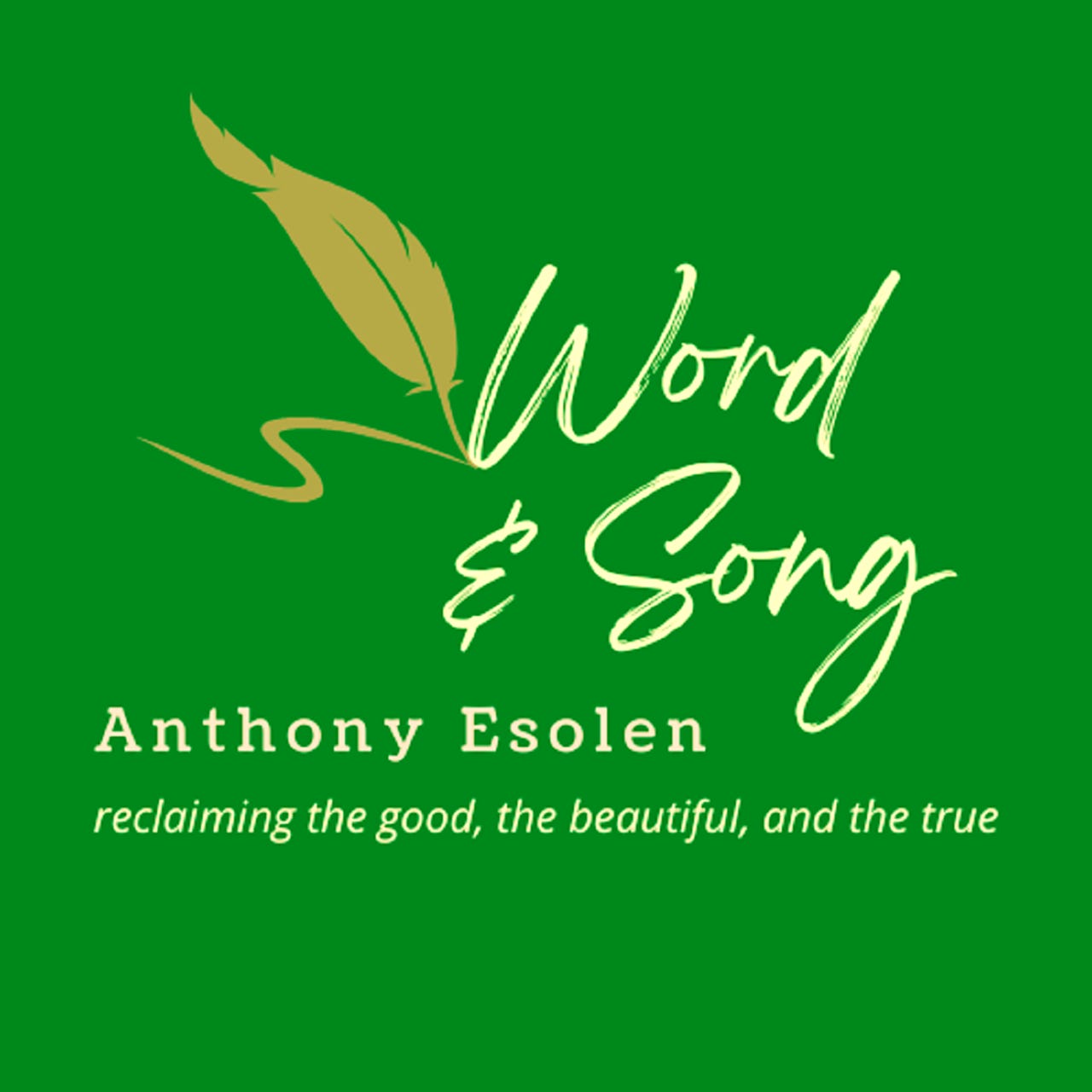"The Whistling Gypsy"
Manage episode 413585388 series 3540370
Through this weekend at Word & Song our Easter special continues with a 20% discount on all upgrades, gift, and new subscriptions. We wish you all the blessings of Eastertide.
Sometimes a Song is a folk song. Most folk songs we feature at Word & Song are over a hundred years old, and some much older. By definition, a true folk song has to have been passed down by oral tradition over a period of time and have been known and sung by many people. A great number of what we consider American folk songs, of course, came here with settlers from across the pond at one time or another, and so, for example, Americans still sing “Auld Lang Syne” at the New Year. As a child I learned many many English, Scottish, Irish, Italian, and German folk songs .. in school. Those songs enriched my life then and continue to do so now. “My Bonnie Lies over the Ocean,” “Santa Lucia,” “Oh, Dear, What Can the Matter Be?” and “The Happy Wanderer” were among the many dozens of songs regularly sung by school children. And we had plenty of home-grown folk songs, as well, such as “My Darling Clementine” and “Polly Wolly Doodle,” and “The Man in the Flying Trapeze.”
Sadly I know that in our times, folk music is no longer sung by school children, nor do most teachers know any folk music to introduce to school children. This unfortunate fact was documented by studies conducted some twenty-five years ago which outlined the serious decline of music in our schools, at about the time when Tony and I had already taken the plunge into homeschooling our children. When I began to realize how much folk music had fallen off in the greater society, I tried to counter this trend in a small way by teaching a monthly class to homeschoolers — just for the fun of it — and at each meeting introduced kids (and parents) to a good handful of songs from my dog-eared copy of The American Song Treasury, a collection of “one hundred best-loved folk songs of the American people” (1964). I highly recommend this book to anyone with kids — to browse and sing from. The songs are arranged by era, with a brief general introduction to each section as well as an excellent introduction to each of the one hundred songs.
So what has this long digression to do with today’s song? Well, you will recall that there was a great folk music revival going on in the English-speaking world in the early-to-mid 20th century, through the 1960’s. Today’s song was composed in 1952 by a Leo Maguire, a classically-trained singer who became a very popular radio entertainer in the 1930’s and 40’s in Ireland. Now all true folk songs have to begin somewhere, but we generally designate a song to the folk category if it follows the common principles of the genre - most often a ballad or a lament (or both) that tells a story of some sort and if it is widely sung and known by ordinary people. Leo Maguire called his song “The Whistling Gypsy,” and the tune was is also his composition. But the song shares much in common with a number of folk songs from both Ireland and Scotland that tell the story of a lady who runs away from home with a rover who turns out to be a rich Laird, or a highwayman, or some such rascal. In these songs, the lady is pursued by her angry father or her grieving husband; but when she is found, she refuses to leave her gypsy lover. Most folk songs evolve over time, with lyrics modified or added to, with some variations in the tune. Since he wrote it, Maguire’s “Whistling Gypsy” was subsequently recorded with slightly different words and called “The Gypsy Rover.” But the song has historical links to older folk variants: “The Raggle-Taggle Gypsy,” “The Gypsy Davey,” and “The Gypsy Laddie,” among others. I’ve included “The Gypsy Laddie” below, recorded by a Scottish folk group called The Tannahill Weavers in 1979, so you can listen to one old variation of the song.
Maquire’s song was a huge hit, not only in Ireland, but around the world. It was part of the repertoire of an well-known Australian folk group, The Seekers. In the United States, the song was done by folk singers from Peter Seeger to the Lettermen to the Kingston Trio and beyond. But the version that I believe took the song over the top in the US was a recording by the Irish group, The Clancy Brothers, with their lead singer and all-around virtuoso musician, Tommy Makem. Pete Seeger is on the banjo in today’s recording, but I chose this song for another reason — the 200 voice AUDIENCE who sang along with the Clancy Brothers on the refrains. This was an entirely unplanned recording effect, with no fancy studio musicians and conductors. It was ordinary folk, singing an extraordinary folk song, with a group of extraordinarily talented folk singers and musicians. Friends, it doesn’t get any better than this!
Upgrade or Gift Discount Offer
Share Word & Song by Anthony Esolen
Word & Song by Anthony Esolen is an online magazine devoted to reclaiming the good, the beautiful, and the true. We publish six essays each week, on words, classic hymns, poems, films, and popular songs, as well a weekly podcast for paid subscribers, Poetry Aloud or Anthony Esolen Speaks. Paid subscribers also receive audio-enhanced posts and access to our full archive and to comments and discussions. We value all of our subscribers, and we thank you for reading Word and Song!
18 حلقات





